Artist's bridges and mahlsticks* have been used for as long as artists have had to keep a steady hand when drawing details or fluid curves. The mahlstick is probably the most familiar of the two, being central to many an artist's self portrait.
William-Adolphe Bouguereau:1895
Notice how Bouguereau holds onto his mahlstick with the little finger of his left hand, whilst with the same hand holding his brushes and steadying his palette. There is rather fine series of hand adjustments being made here, and I'm sure he would have had a lot to say about the correct way to hold a paintbrush.
Caterina van Hemessen: Self portrait: 1548
Caterina van Hemessen is also a dextrous controller of her materials, once again we see an artist holding brushes and a palette, but this time we can see the mahlstick in use and the artist's very typical thumb index and forefinger grip on a brush.
Sofonisba Anguissola: Self portrait: 1556
Sofonisba Anguissola in comparison has a very light grip on her mahlstick and is resting her wrist rather than her hand, suggesting that she is looking for a more lose or free paint handling technique. Mahlstick
Using an artist's bridge as a marl-stick
Paintings of objects like buildings, furniture etc will require you to paint straight lines. The best brush to paint these is a rigger. These are pointed round long haired brushes. They are made to paint details, these long bristled brushes giving you far more control than shorter bristled ones.
Rigger brushes
Typical grip for using a rigger brush
Using an artist's bridge
For many years I have been teaching students how to hold a pencil, or at least asking students to think about how they hold one and how alternative ways might help them with the development of their drawing skills. If you are using an artist's bridge then you might get away with holding your pencil as you would when you write. As you can see in the drawing above, in order to draw a straight line the artist is using a straight edged bridge as a ruler like control guide as well as a hand rest. The wooden bridges in the illustration further above have slightly curved edges, these bridges are for delicate hand control that facilitates the curvature of the wrist/finger relationship, so for instance if you were drawing a series of controlled short curves, as in certain types of cross hatching, then you might use one.
George Grosz
George Grosz pictures himself using an artist's bridge but in a sort of off-hand way, as if it's incidental to his musings, his imagination flying around everywhere, the bridge almost an after thought, but it is still something he must value as part of his artist's equipment, or he wouldn't have felt a need to draw it. He feels in control of his world, he inhabits it centrally, a rock like ark out of which the bird of invention might fly and look for new land.
Artists have to vary their grip in order to use their pencils, pens, crayons and brushes in ways that make sense. For instance the way you are taught to hold a pencil at school is more about gripping it tightly, so that you can control your handwriting. However this means that you are not able to use the full dexterity of hand and wrist muscles, and the finger/thumb grip often means that the pencil tip is hidden as the hand can block the line of sight between the pencil tip and your eyes. Below are some alternative grip strategies, all of which have positives and negatives, and as a drawer you need to try them all out and see which ones are useful, in which situations.

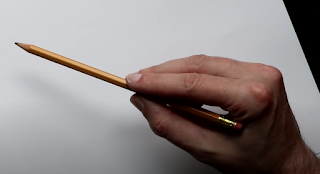
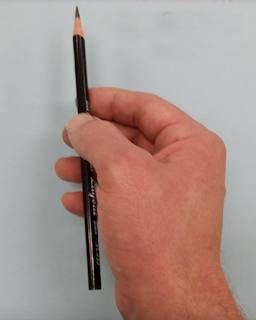
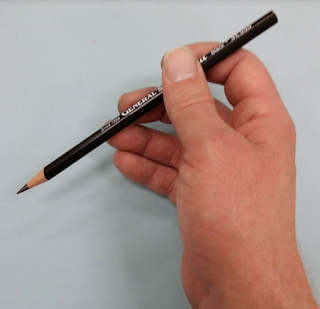
I personally like to use the typical grip for using a rigger brush, with my little finger used as a rest, but I use a looser hold more like the image directly above. This allows me to make good use of my little finger like a spring, which allows for pressure changing as well as support for an unsteady hand and if I have an extremely difficult curve to manage, I rest my ring finger on the paper as well as the little finger. This usually means I'm controlling my hand movements from my elbow rather than my wrist.
Carracci: Artist cutting a feather quill 1600, pen and brown ink
Carracci's drawing makes us aware that he was very aware himself of the importance of grip. Grip is involved in so many of an artist's actions and the making of our tools often influences how we might hold them later when we want to make marks with them.
Pierre Dumonstier II: Right hand of Artemisia Gentileschi holding a brush: 1625
Artemisia Gentileschi holds her brush as if she is about to throw a dart, a precision gesture, one about how to approach the canvas when you really mean it.
Artemisia Gentileschi: self portrait
In her self portrait Artemisia Gentileschi rests her left arm on a narrow table top, in order for her right hand to maintain control, the whole body being steadied by this action. Gentileschi appears to get far more physically involved with her painting than Caterina van Hemessen, but in their own ways both need to use supports for their brushwork control.
Louis-Leopold Boilly (1761-1845),
Portrait of a Young Woman drawing Herself, black chalk heightened with white
The young woman in Boilly's drawing is holding her drawing implement in the same way you would hold a pen for writing. This immediately identifies her as an amateur artist, she stares out at Boilly rather than concentrating on her own drawing, resting her inactive left arm on her active drawing arm.
Lovis Corinth: 1924
In contrast Lovis Corinth stares hard into the mirror and his drawing hand grips the pencil roughly, whilst his other hand holds onto the sketchbook, you get the feeling that this is not a very steady or secure platform on which to make a drawing and the resultant image reflects this.
Watteau
Watteau draws his artist holding palette and brushes as if they are about to perform an exquisite dance, a sensibility about as far from the one Lovis Corinth displays as you can get.
Émile Friant – Self Portrait
Émile Friant's self portrait is a beautiful study of balance, his hand and eye control co-ordinated delicately as the tip of his brush just touches the canvas. You can imagine his hand quivering as it moves in response to the nuances of what Friant believes he is seeing. This too is a sort of dance.
Menzel: Studies of a man painting
Menzel: drawing of a paintbrush
In comparison to Friant, Menzel is a ruffian, he is painter who uses hog's hair brushes and not just uses them but destroys them in their use. No fine balance here just brute force and honesty. Look at the way he pushes the brush down to splay out its edges, he works with the image horizontal so that he can be on top of it, if the painting had been set on an easel it would be pushed over by his hand's weighty engagement with his image making, no wonder his brushes were worn down, mangled and pulverised. He must have understood this aspect of his approach as being of significance or he would not have been drawn to make an image of one of his brushes. He has a similar bluntness and direct honesty when it comes to making a self-portrait, just as a painting relies of the nature of the brushes used to make it, so a human being relies on a good set of feet, or plates of meat as my grandad used to call them, to hold them steady.
Adolph Menzel: Self portrait
When looking at this painting by Menzel I can imagine him looking down at the painting and at the same time shifting his gaze to look down at his foot. Every painting or drawing is rooted in the way an artist uses their tools, this coupled with the fact that everyone is a bundle of nerves and muscles and blood and bones and microbes and the difficulty in co-ordinating all that stuff into a smoothly running machine, that can hold a pencil or a brush. In many ways it is in the control of all that bodily mass that meaning is made, and part of that meaning is in how we hold our applicators and move our hands, and deciding whether or not to steady them.
Joshua Reynolds: Self portrait
I'll leave you with Joshua Reynolds, holding his mahlstick like a sword, shielding his eyes almost as if having to protect them from the brightness of his own reflection. He is a young man setting out to make his name as a painter, he doesn't really need the mahlstick to rest his arm, notice that there is no leather pad on its end, the mahlstick is more like a symbol for the trade he is entering, he needs no support.
*A maulstick, or mahlstick, is a stick with a soft leather or padded head, used by painters to support the hand that holds the brush. The word is an adaptation of the Dutch maalstok, i.e. the "painter's stick", from malen, "to paint".
See also:
A link to an excellent glass painters guide to how to use grip when using specialist brushes
Drawing hands
The finger and mobile phone screens
Hands, hygiene and hope
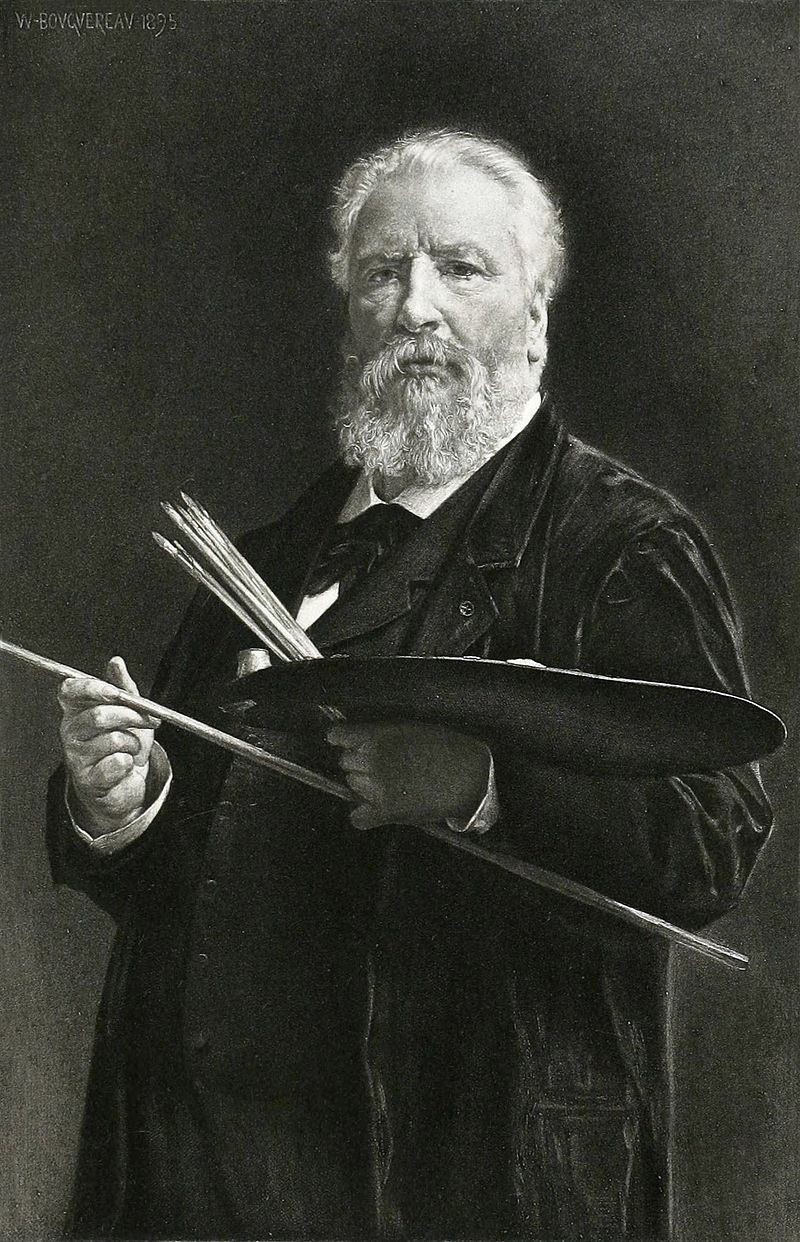
















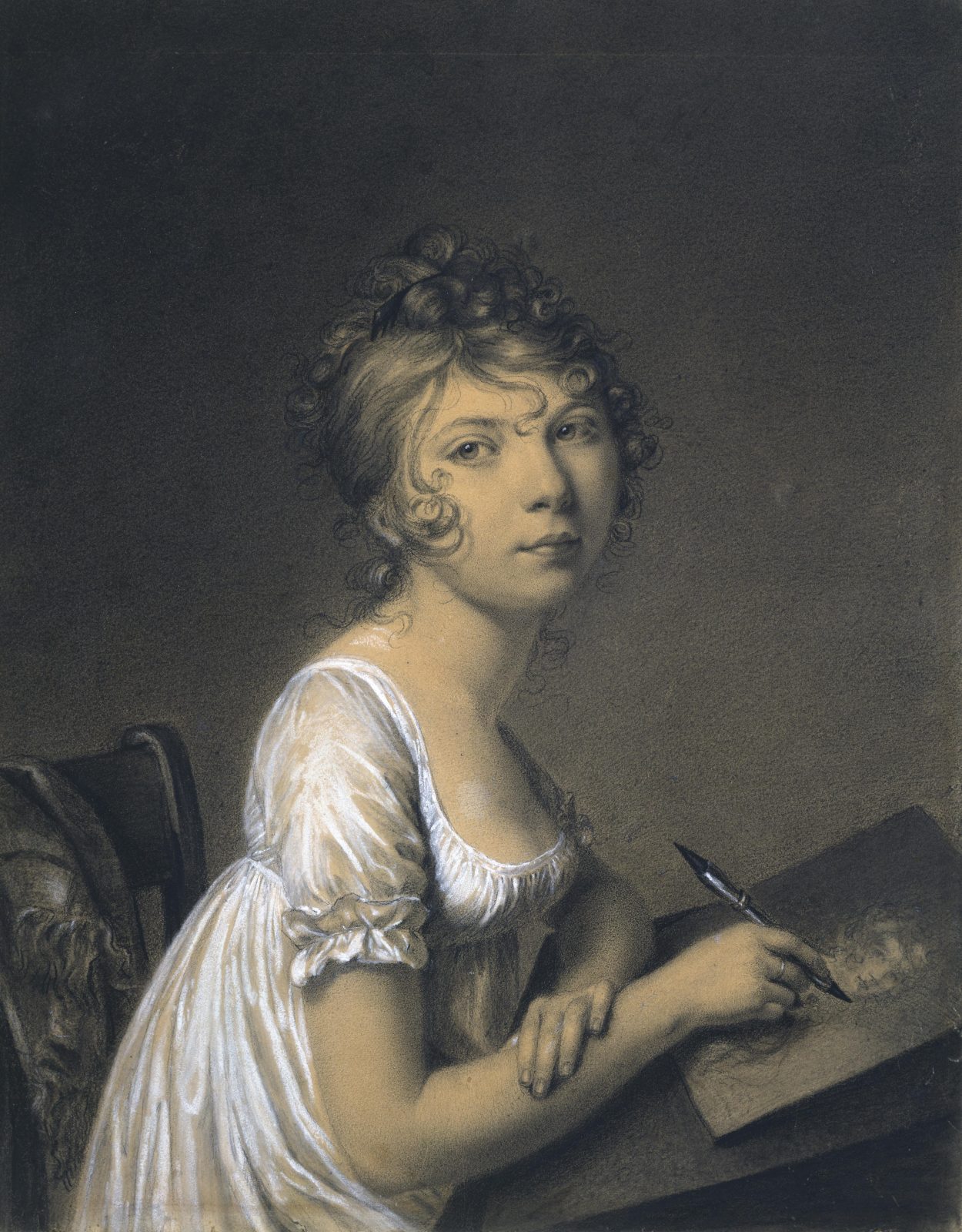
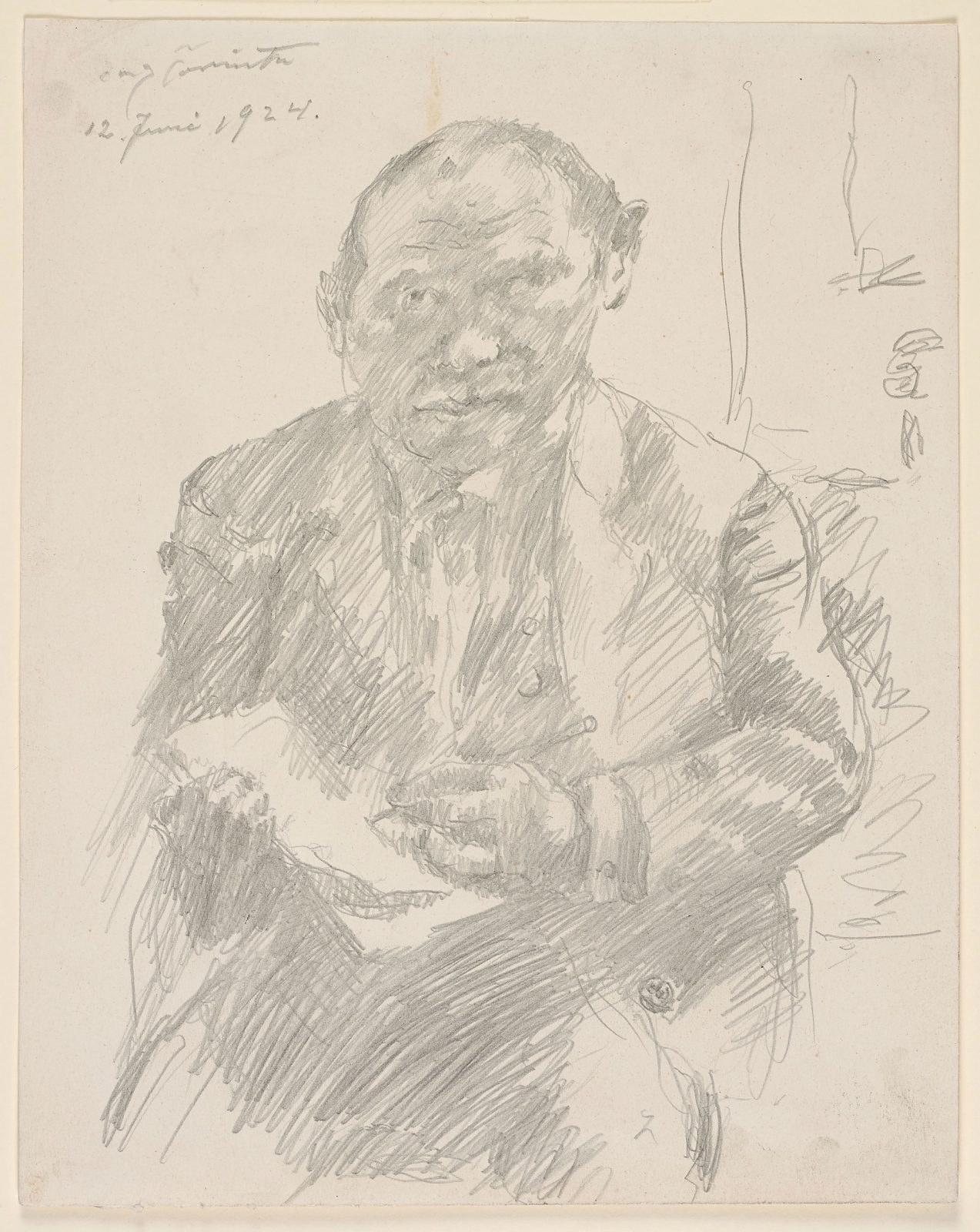
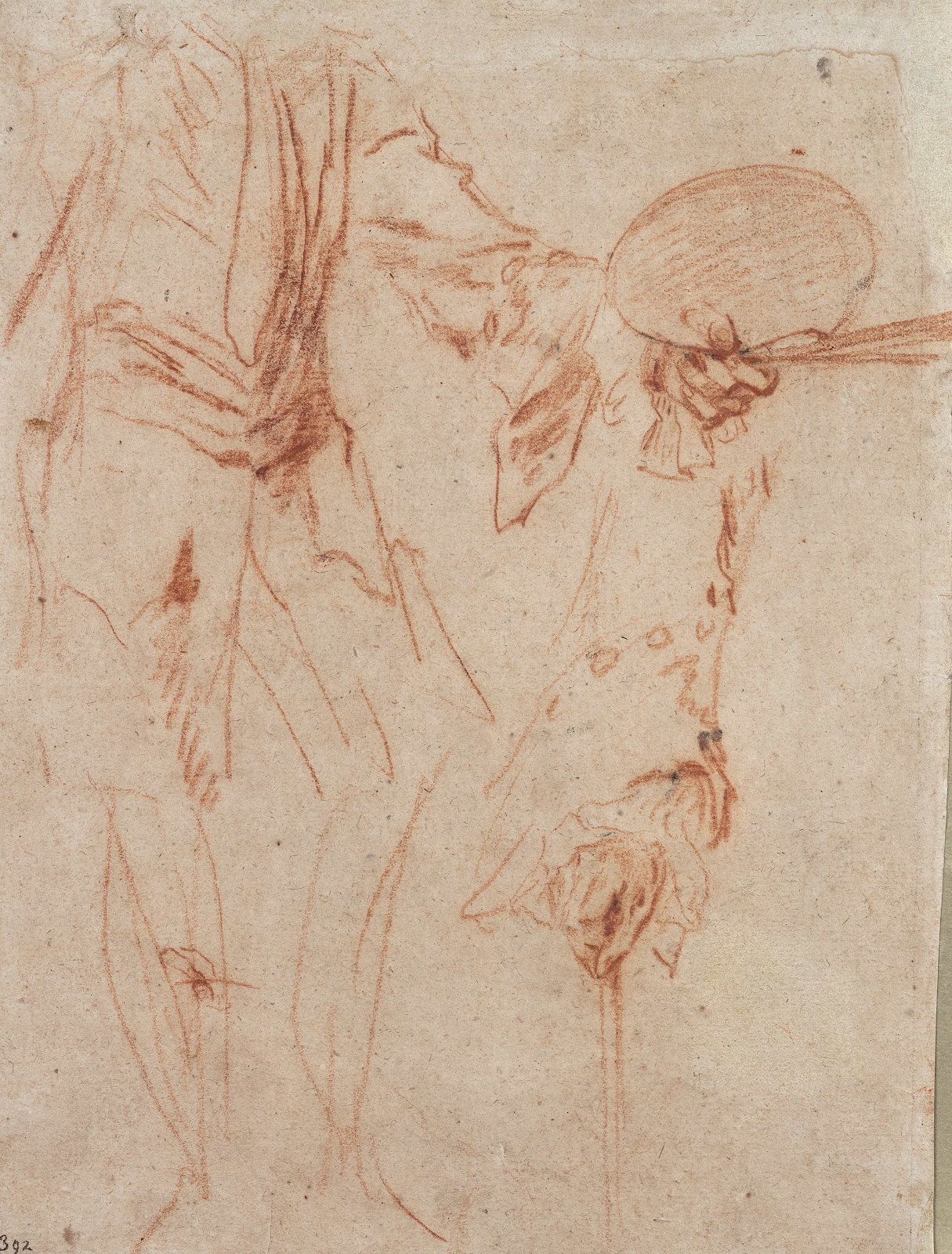



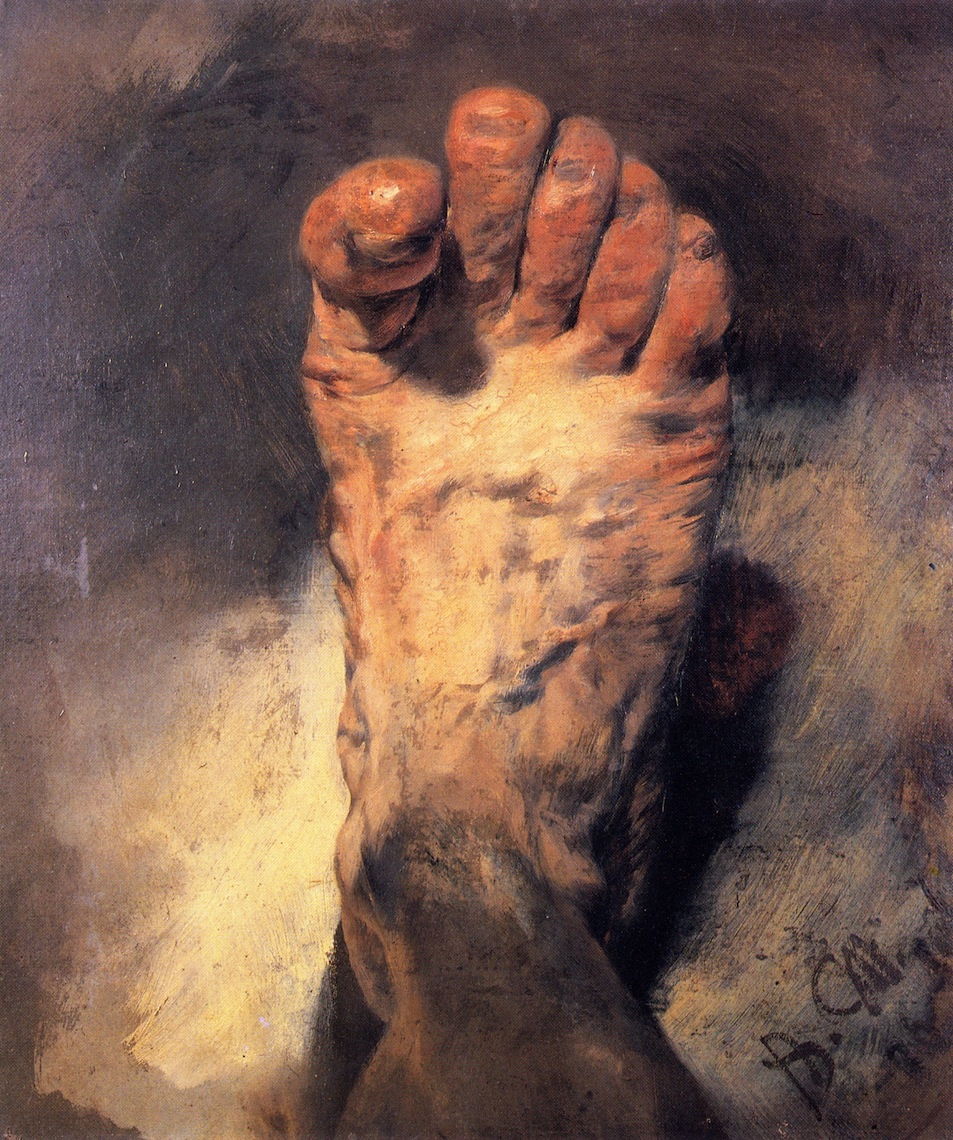

Pharma Health Online Is Here For You With Different Disorders Medications. Also Get the Best Articles That Can Help You Against Disorders.
ReplyDeletePharma Health Online
Buy Generic pills
Generic Anti-Anxiety Pills
Different Disorders Medications
Latest Blogs